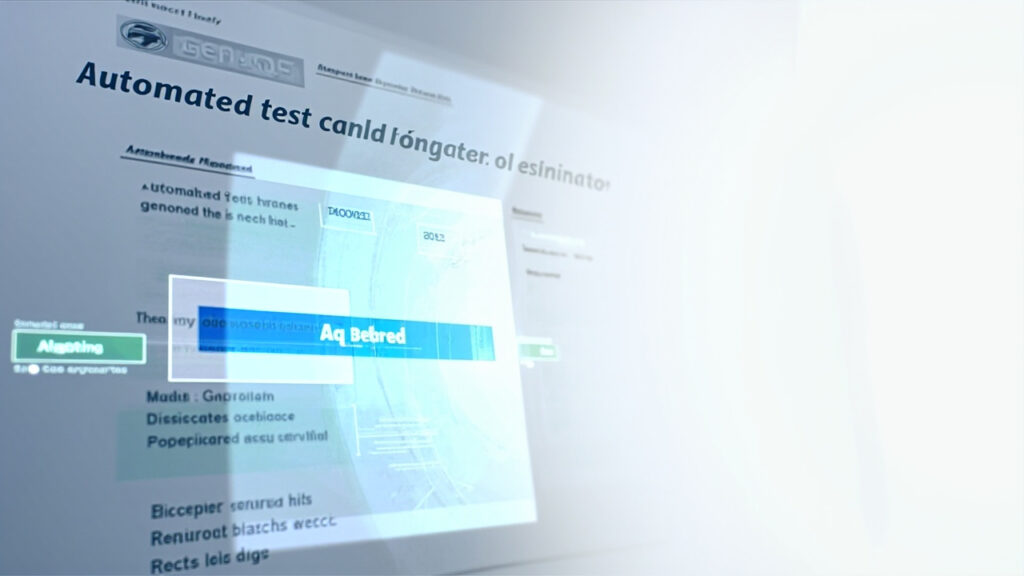In the dynamic and often unpredictable world of software development, the presence of bugs is an unavoidable challenge that development teams must confront to ensure the delivery of high-quality applications. As software systems grow in complexity and market demands push for quicker release cycles, traditional methods of bug elimination often struggle to keep pace. This blog post explores both advanced strategies and innovative tools that modern software teams can employ to effectively minimize bugs, streamline processes, and elevate product quality.
The process of bug elimination is crucial in software development, directly influencing user satisfaction, operational efficiency, and the commercial success of products. While traditional methods lay the groundwork, they now require significant enhancement to meet the nuanced demands of contemporary digital products. Here, we will explore how integrating cutting-edge, AI-driven tools like GenQE can revolutionize the landscape of software testing and quality assurance.
By the end of this article, you will gain a comprehensive understanding of both traditional and modern methodologies for bug elimination. These insights aim not only to enrich your knowledge but also to equip you with practical tools and approaches to enhance your software development lifecycle.
Understanding the Impact of Software Bugs

Software bugs can range from minor interface issues to critical security vulnerabilities that compromise the entire system. Recognizing the diversity and potential impact of these bugs is the first step towards effective management.
The Nature and Types of Software Bugs
Bugs in software can arise from various sources, including logical errors, coding mistakes, environmental conditions, and even user interaction anomalies. These are typically categorized into syntax errors, runtime errors, and logical errors, each affecting the software in fundamentally different ways.
Consequences of Ignored Bugs
Ignoring bugs can lead to decreased user satisfaction, increased maintenance costs, and in severe cases, the failure of the software in the market. The reputational damage from releasing bug-ridden software can be long-lasting and far-reaching.
The Economic Impact
Based on a report from the Consortium for IT Software Quality (CISQ), the cost of poor software quality in the US in 2020 was approximately $2.08 trillion. This substantial figure underscores the critical need for effective bug management strategies.
Traditional Bug Elimination Methods

Understanding the traditional techniques that have shaped current practices in bug elimination is essential before exploring AI-driven methodologies.
Code Reviews
Manual code reviews involve developers examining each other’s code for mistakes and areas for improvement. Although effective, they are time-consuming and can be highly subjective.
Testing Phases
Standard testing phases, such as unit testing, integration testing, and system testing, are designed to identify bugs at different stages of the software development lifecycle. However, these tests can often be siloed and might miss interaction bugs.
Debugging Tools
Traditional debugging tools help developers isolate the cause of a bug once it’s detected. Tools like debuggers, profilers, and log analyzers are integral to this process.
The Rise of AI in Software Testing

The integration of artificial intelligence in software testing offers a transformative approach to bug elimination, enhancing both efficiency and precision.
AI-Driven Test Case Generation
AI technologies can automatically generate test cases based on the analysis of application data, user behaviors, and past test results. This not only speeds up the testing process but also ensures comprehensive coverage that might be overlooked by human testers.
Enhancing Test Accuracy with Machine Learning
Machine learning models can predict potential failure points in software applications by analyzing historical data. This proactive identification helps focus testing efforts where they are most needed, before bugs impact the end-user experience.
Continuous Learning and Adaptation
AI systems continuously learn from new data, adapting their testing strategies to evolving software environments. This dynamic approach ensures that testing processes remain relevant and effective as the software itself changes.
GenQE: A Case Study in AI-Powered Bug Elimination

Incorporating GenQE within the context of advancing software quality through AI-driven testing offers a glimpse into the future of bug elimination.
AI-Driven Test Generation by GenQE
GenQE leverages AI to automate the creation of test cases, reducing the dependency on manual test design and significantly improving test efficiency and coverage.
Smart Test Execution
With its capability to prioritize test cases based on risk analysis, GenQE ensures that critical areas of the application are tested first, optimizing the efforts of testing teams.
Self-Healing Automation
GenQE’s innovative self-healing features automatically adjust test scripts when UI elements change, which minimizes maintenance efforts and reduces the downtime caused by broken tests.
Integrating GenQE with DevOps and CI/CD Pipelines

The seamless integration of GenQE with existing DevOps practices and Continuous Integration/Continuous Deployment (CI/CD) pipelines exemplifies its role in modern software development environments.
Streamlining Development Workflows
GenQE’s compatibility with tools like Jenkins, GitHub Actions, and Azure DevOps facilitates its incorporation into automated testing workflows, ensuring continuous quality assessment throughout the development cycle.
Enhancing Developer Productivity
By automating repetitive testing tasks, GenQE frees developers to focus on more creative and innovative aspects of software development, thus enhancing productivity and job satisfaction.
The Future of Bug Elimination

As we look towards the future, the role of AI in software testing is poised to expand, bringing more sophisticated, efficient, and effective methods to the forefront of bug elimination strategies.
Predictive Analytics and Bug Prevention
Future advancements may allow AI-driven tools to not only detect and manage bugs more effectively but also predict and prevent them based on evolving patterns and user interactions.
The Role of Big Data in Enhancing Testing
The integration of big data analytics with AI testing tools could lead to unprecedented levels of test accuracy and efficiency, as vast amounts of operational and user data are used to refine testing processes continuously.
Expanding the Scope of AI in Testing
As AI technologies evolve, their application in testing will extend beyond mere bug detection to encompass aspects of security, performance, and even user experience design, offering a holistic approach to quality.
Conclusion

The journey from traditional bug elimination methods to AI-driven approaches like GenQE represents a significant shift in the software development landscape. By embracing these advanced technologies, organizations can not only enhance the quality and reliability of their software products but also achieve greater market success and customer satisfaction.
For those looking to stay ahead in the fast-evolving field of software development, exploring and integrating tools like GenQE could be a transformative step towards achieving higher efficiency and effectiveness in bug management.
Explore how GenQE can revolutionize your software testing processes and help you maintain a competitive edge in a market that demands perfection.
Discover More Innovative Solutions
Want to learn more about the tools and technologies discussed in this article? Explore how these innovations can be tailored to your specific needs and workflow requirements.
Our team of experts is available to answer your questions and provide personalized insights into how modern solutions like GenQE can address your specific challenges.